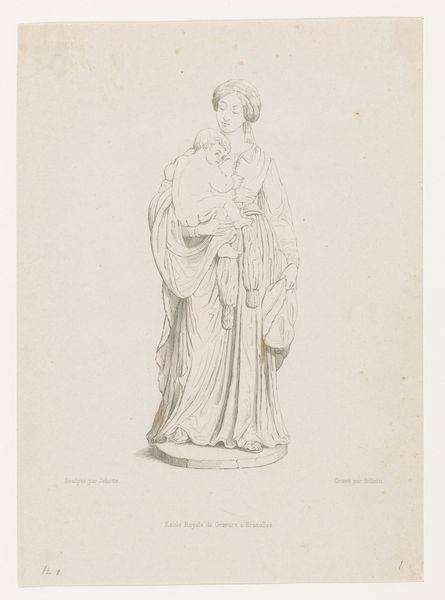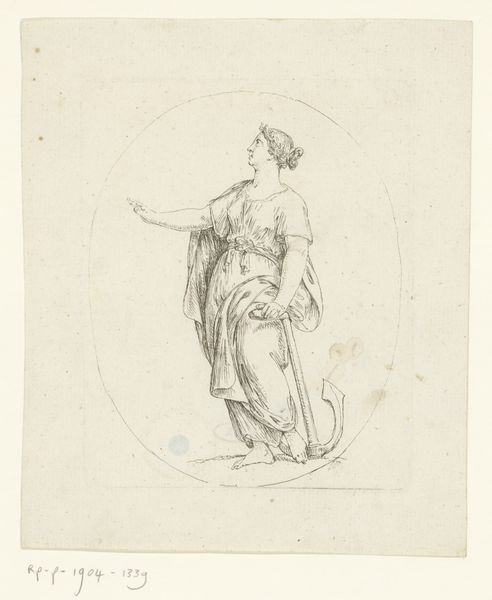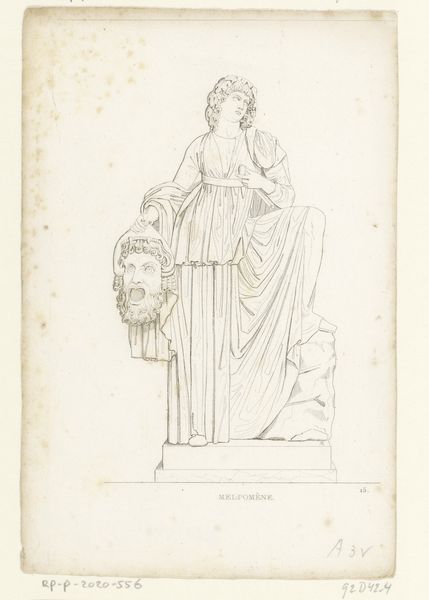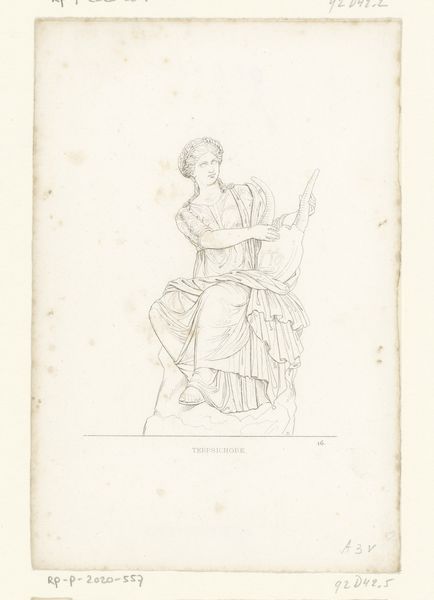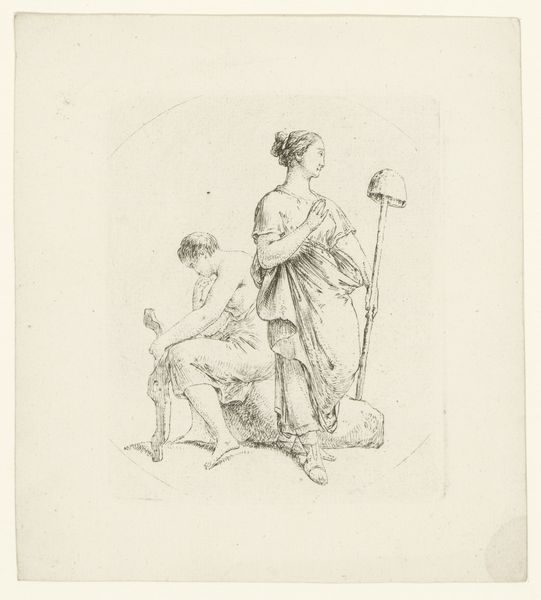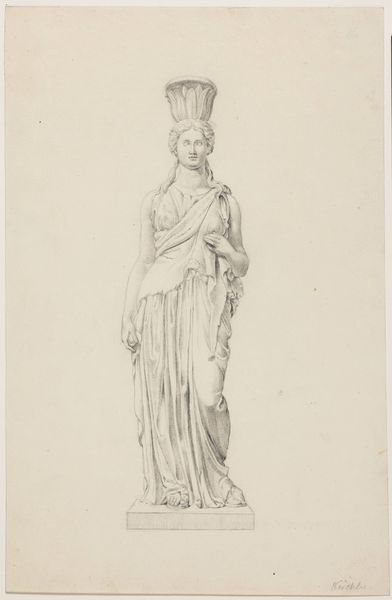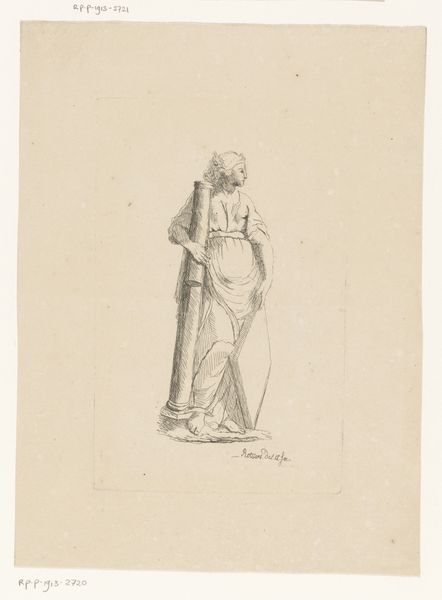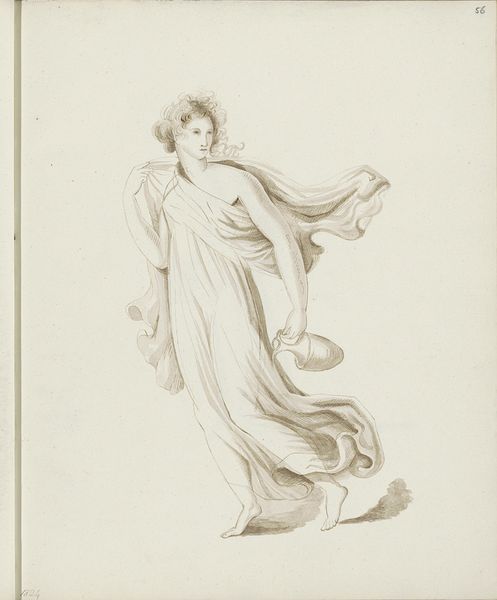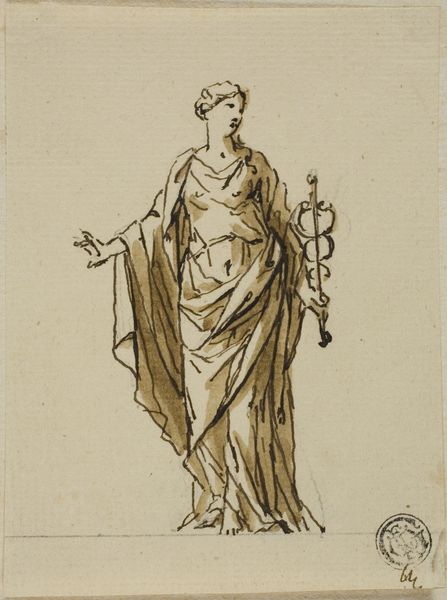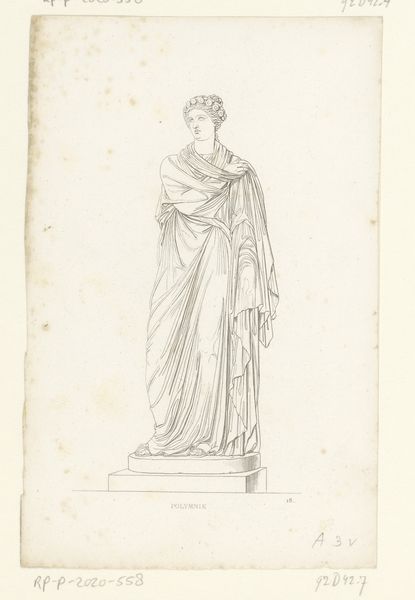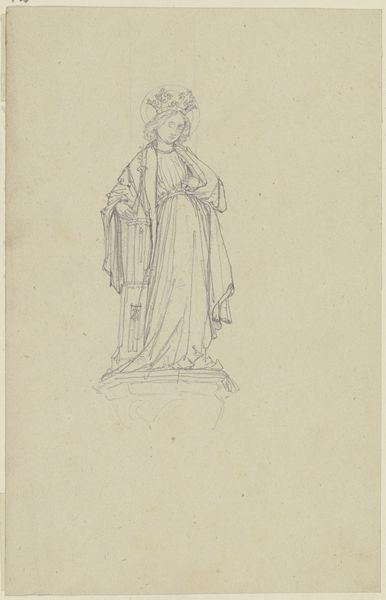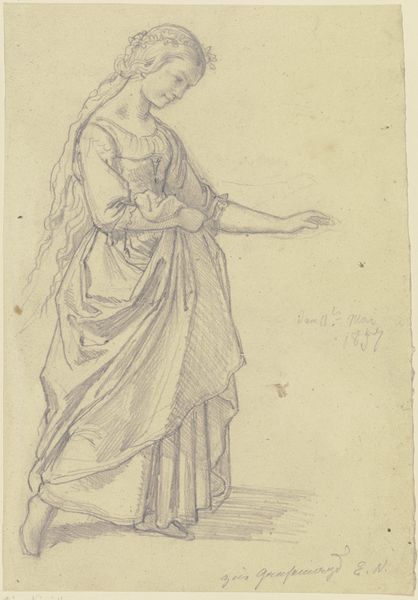
drawing, pencil
#
pencil drawn
#
drawing
#
allegory
#
neoclassicism
#
pencil sketch
#
etching
#
figuration
#
pencil drawing
#
pencil
#
history-painting
#
academic-art
Dimensions: height 239 mm, width 170 mm
Copyright: Rijks Museum: Open Domain
Curator: We're looking at Henri Van der Haert's drawing, "Justitia Beschermt Onschuld," from 1836, currently held at the Rijksmuseum. It's a pencil drawing, an allegorical work in the Neoclassical style. Editor: There's such delicate vulnerability in this drawing. The sharp sword and balanced scales held high by Justitia are such stark contrasts to the sheltered innocence clutched so safely by her. You almost forget they’re related, these instruments of power to this little act of nurture. Curator: Right, let's consider the materials and context here. The choice of pencil – a readily available and relatively inexpensive medium – signals that this drawing could be a preparatory sketch or a study, part of the artistic process toward a larger finished artwork. Its allegorical form—Justice protecting innocence—engages with the period’s understanding of political theory and its societal influence at the time it was rendered. Editor: I feel a powerful emotional presence here. Justitia’s gaze—strong yet tender—creates an intensely felt relationship with Innocence. Maybe because it's a drawing; maybe the vulnerability speaks louder because it feels so… intimate? Curator: Absolutely. This is about exploring power relations. Justitia, with her attributes – the sword and scales – embodies institutional power, a concept literally ‘drawn out’ using widely accessible materials like pencil. That this rendering uses those accessible media invites debate on notions of ‘justice for all.’ The soft gradations and almost delicate handling of line further emphasize those societal notions. Editor: Van der Haert invites a bit of reverie, a deep contemplation on something more profound: justice, protection, and inherent good—or our idea of these concepts, rather. Like seeing the hope drawn from shadow… Curator: In summary, viewing this artwork in its material context invites important socio-historical analysis; exploring production methods through its accessible nature makes accessible dialogue possible even today. Editor: It leaves me pondering the labor involved, like many pencil-based preparatory works—was the work arduous or meditated—to consider concepts still so fraught.
Comments
No comments
Be the first to comment and join the conversation on the ultimate creative platform.

